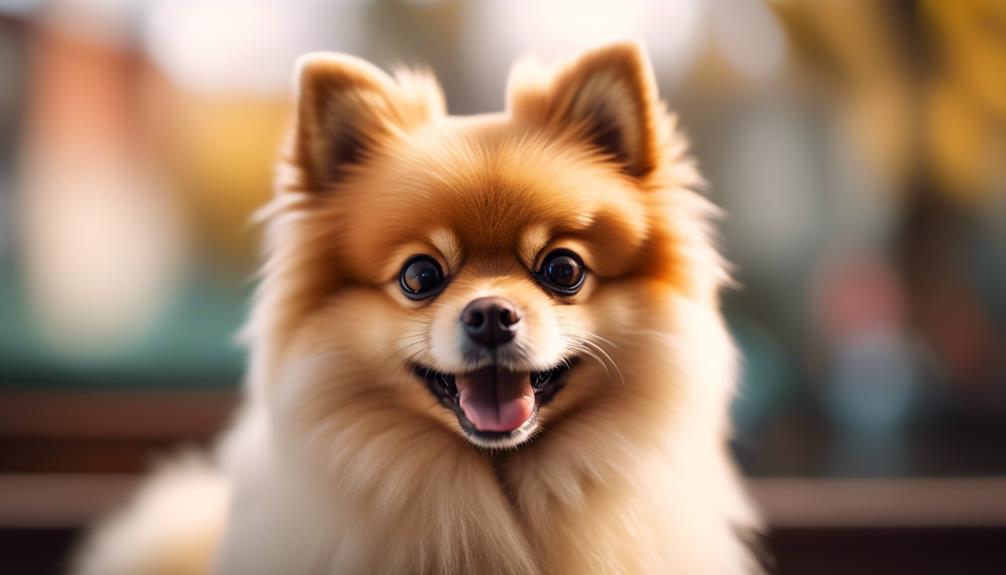
With their endearing appearance and rich history, Pomeranians captivate the hearts of dog lovers worldwide. Like a tapestry woven through time, their journey from the snowy lands of Pomerania to the royal palaces of Europe is a tale that begs to be unraveled.
But beyond their captivating origin lies a world of characteristics and traits that make these small dogs unique. From their physical features that resemble a fox to their lively and spirited temperament, there is much to discover about the Pomeranian breed.
So, grab a seat because this discussion promises to reveal the fascinating allure of Pomeranians, leaving you yearning for more.
Key Takeaways
- Pomeranians originated from the Pomeran region in Europe and became popular in the 18th century, with Queen Victoria playing a significant role in their popularity.
- They are small, compact dogs with a fluffy double coat that requires regular grooming, brushing, and bathing.
- Pomeranians have a highly energetic and lively temperament but can be independent and strong-willed. Early socialization is essential to prevent shyness or aggression.
- They are intelligent and quick to learn new commands, making them responsive to positive reinforcement training. Regular exercise, mental stimulation, and socialization are essential for their well-being.
Origin and History
The Pomeranian dog breed originated from the Pomerania region in Europe and is a descendant of large sled-pulling dogs. They became popular in the 18th century, and their rise to fame was further fueled by Queen Victoria, who played a significant role in their popularity. The American Kennel Club recognized the breed in 1888.
Pomeranians are known for their small size and compact bodies. They have a fluffy double coat that requires regular grooming. They have a unique appearance with their alert expression, bright, intelligent eyes, and distinctive fox-like faces with a pointed muzzle. Pomeranians have a plumed tail that’s carried high over their back.
In terms of temperament, they are highly energetic and lively. They are intelligent and quick to learn new commands. Pomeranians often exhibit a confident and self-assured demeanor. They are curious, always exploring their surroundings. Pomeranians can be vocal and may bark to alert their owners.
Regarding trainability, they respond well to positive reinforcement training methods. They enjoy mental stimulation and learning new tricks. Regular exercise is essential to prevent boredom and destructive behavior. Daily walks and playtime are necessary for their well-being. Agility training and obedience classes can be beneficial.
Regarding health and care, Pomeranians are prone to dental issues, so regular teeth brushing is essential. They can develop patellar luxation, a condition affecting the knee joint. Some Pomeranians may have a higher risk of heart problems. Regular vet check-ups and vaccinations are necessary. Proper nutrition and weight management are crucial for their health.
Physical Characteristics
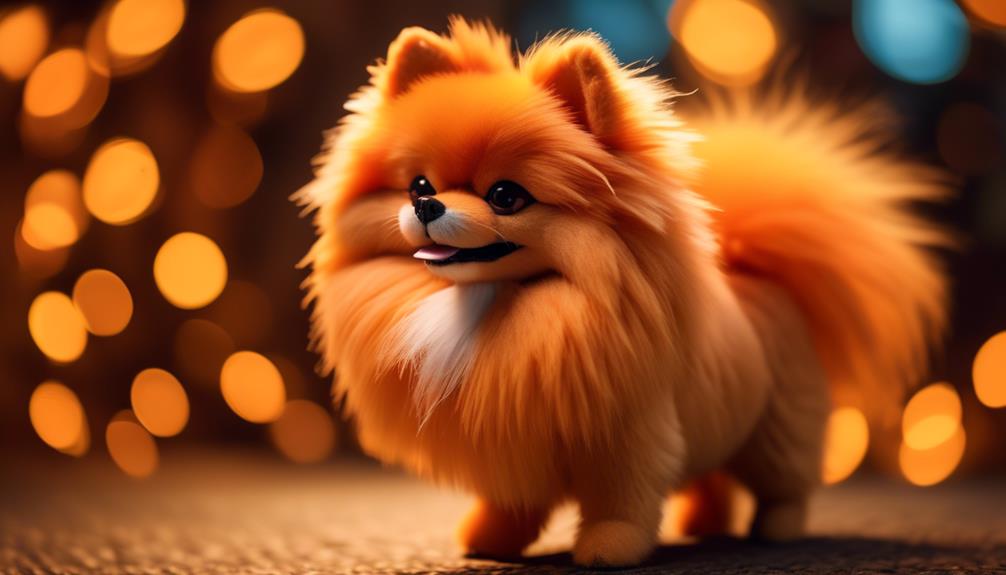
After learning about the origin and history of the Pomeranian dog breed, let’s now explore their physical characteristics.
Pomeranians are known for their small size and compact bodies. They have a fluffy double coat that requires regular grooming to keep it looking its best. With their alert expression and bright, intelligent eyes, they have a distinctive fox-like face with a pointed muzzle.
One of their most recognizable features is their plumed tail, carried high over their back. Pomeranians may be small, but they have a big personality that matches their lively and energetic nature. They’re quick to learn new commands and are often confident and self-assured.
Temperament and Personality
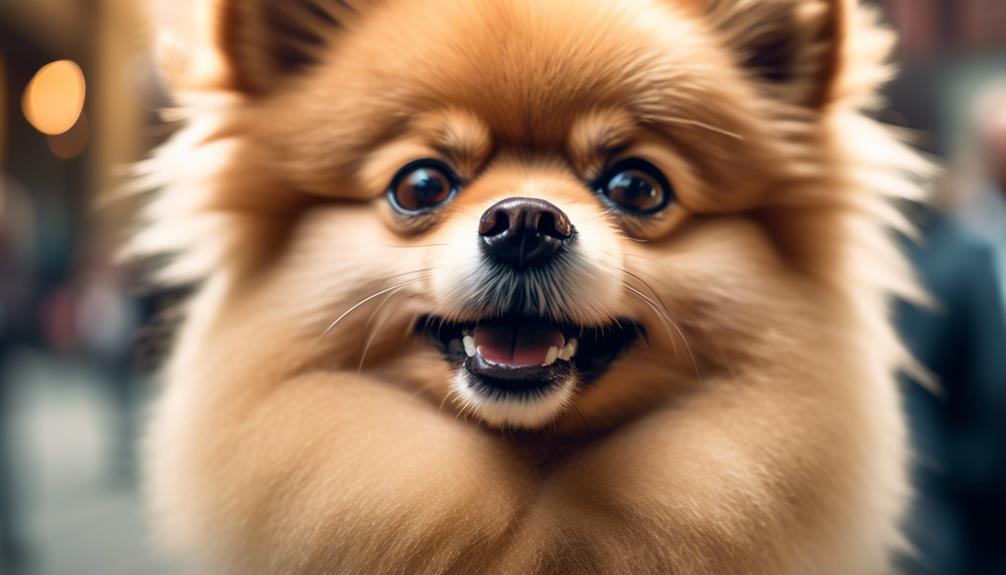
Pomeranians exhibit a highly energetic and lively temperament. They are intelligent and quick to learn new commands, often confident and self-assured. With their curious nature, they are constantly exploring their surroundings. Pomeranians can also be quite vocal and may bark to alert their owners. To provide a clearer picture of their temperament and personality, the following table showcases the critical characteristics of Pomeranians:
| Temperament | Personality |
|---|---|
| Highly energetic | Intelligent |
| Lively | Confident and self-assured |
| Curious and inquisitive | Alert and attentive |
| Vocal and expressive | Friendly and affectionate |
| Playful and lively | Protective of their loved ones |
This table highlights Pomeranians’ dynamic and engaging nature, capturing their vibrant personality and temperament.
Trainability and Exercise Needs
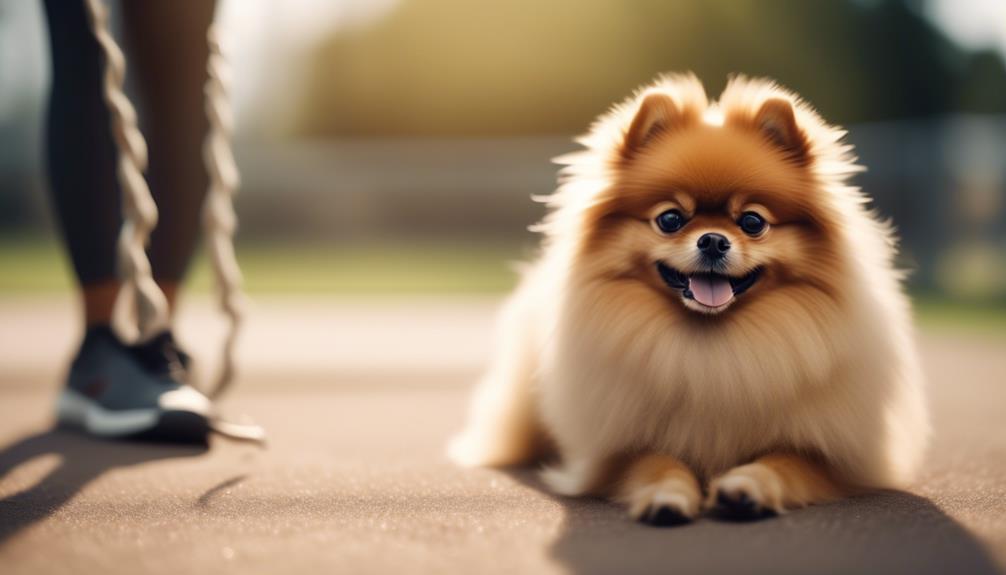
To ensure their well-being, Pomeranians require proper training and regular exercise. These small and energetic dogs respond well to positive reinforcement training methods. They enjoy mental stimulation and learning new tricks, so it is beneficial to incorporate training sessions into their routine.
Pomeranians need regular exercise to prevent boredom and destructive behavior. Daily walks and playtime are essential for their physical and mental health. Additionally, engaging in agility training and obedience classes can further stimulate their active minds. It’s important to note that Pomeranians have a lot of energy packed into their tiny bodies, so adequate exercise is crucial for their overall well-being.
Health and Care
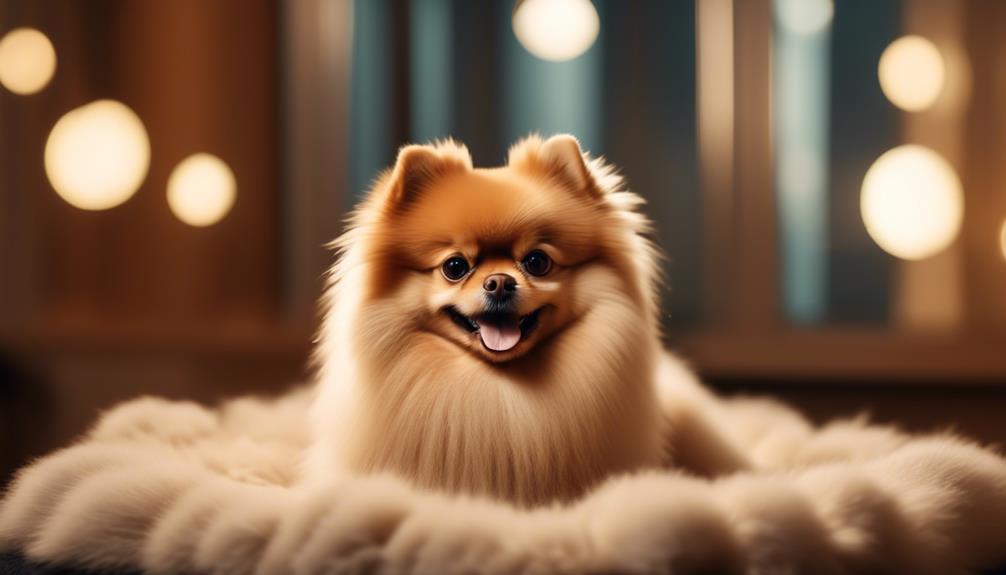
Taking care of a Pomeranian’s health is crucial for their overall well-being. These small dogs are prone to dental issues, so regular teeth brushing is essential to maintain oral hygiene.
Additionally, they can develop patellar luxation, a condition affecting the knee joint, so monitoring their mobility and providing appropriate exercise is essential.
Some Pomeranians may also have a higher risk of heart problems, making regular vet check-ups and vaccinations necessary to catch any potential issues early on.
Proper nutrition and weight management are crucial for their health, as obesity can lead to various health problems.
Origin and Popularity
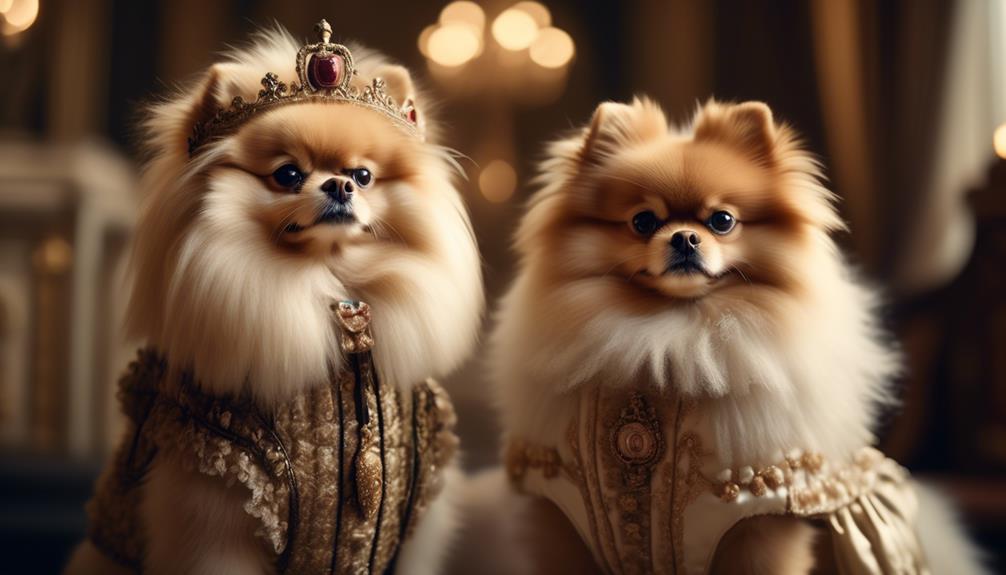
Initially from the Pomeranian region in Europe, the Pomeranian dog breed gained popularity in the 18th century. Queen Victoria played a significant role in their rise to fame, becoming a devoted owner and breeder of Pomeranians. Her affection for the breed led to a surge in their popularity among the elite.
Today, the Pomeranian remains a highly sought-after companion dog, known for its small size, fluffy coat, and vibrant personality. They’re often seen in the arms of celebrities and are a favorite choice for city dwellers due to their adaptability to apartment living.
Pomeranians continue to captivate dog lovers worldwide with their adorable appearance and charming demeanor.
Physical Features
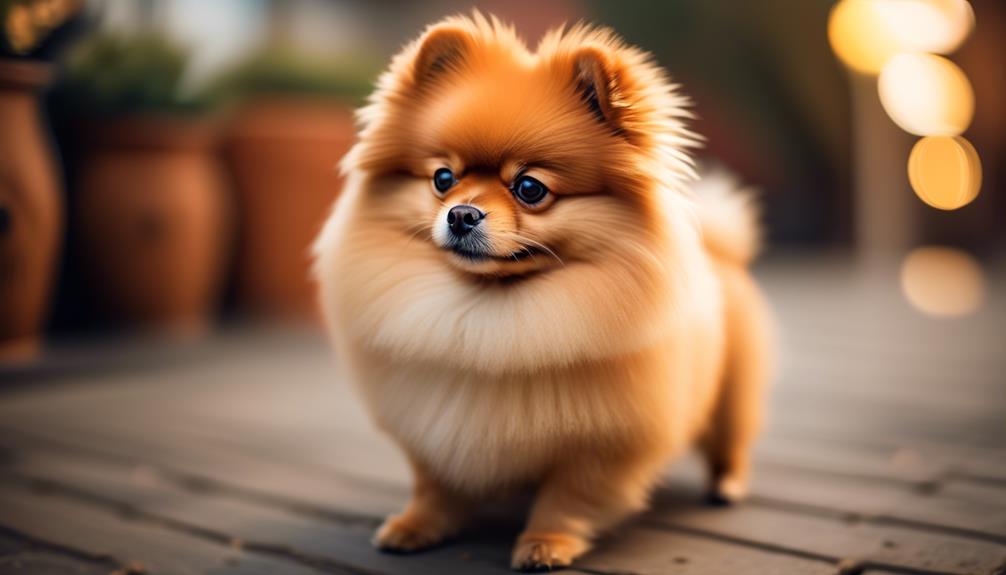
The Pomeranian dog breed is known for its distinctive physical features. These small dogs have a compact body and a fluffy double coat that requires regular grooming. Bright, intelligent eyes complement their alert expression. One of the most distinguishing characteristics of Pomeranians is their fox-like face with a pointed muzzle. Furthermore, their plumed tail is carried high over the back, adding to their elegance.
Despite their small size, Pomeranians exude confidence and self-assurance through their appearance. Their physical features contribute to their charm and popularity as a breed.
Personality Traits
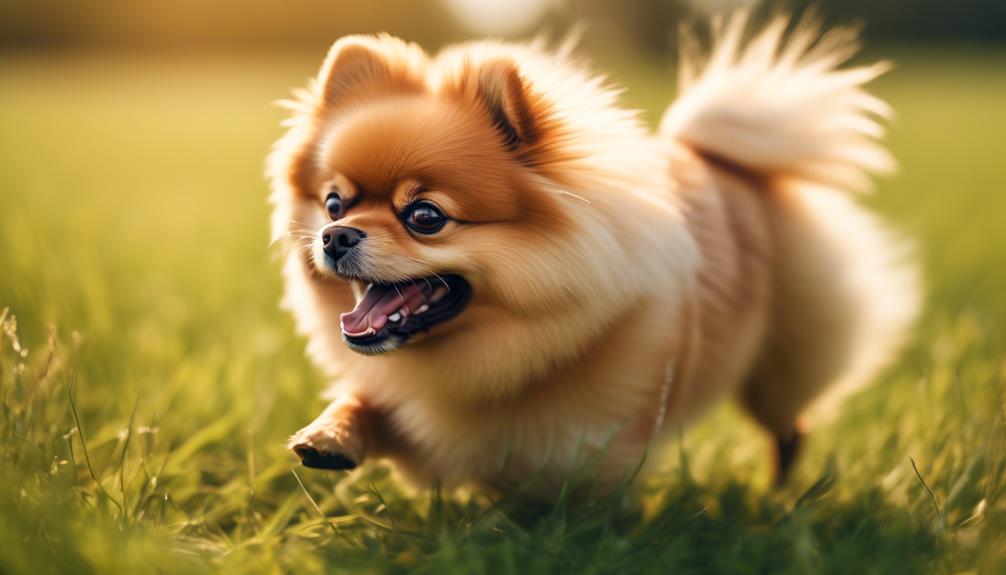
Pomeranians are highly energetic and lively dogs. They have intelligent and quick learning abilities, making them easy to train. With a confident and self-assured demeanor, they’re often fearless and bold.
Pomeranians have a curious nature, always exploring their surroundings. They can be pretty vocal and bark to alert their owners of potential threats. To emphasize their personality traits, it’s important to note that Pomeranians exhibit a combination of intelligence, confidence, curiosity, and alertness.
These traits make them great companions and watchdogs. However, it’s essential to provide them with regular exercise and mental stimulation to prevent boredom and destructive behavior.
Training and Exercise Tips
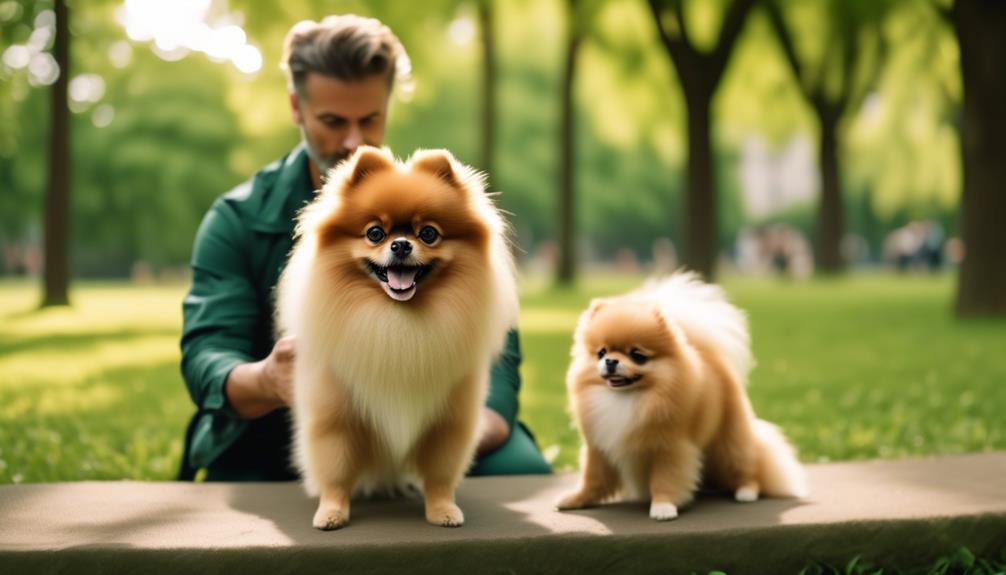
Pomeranians, known for their energetic and lively nature, require specific training and exercise tips to ensure their well-being and prevent boredom or destructive behavior. These intelligent and quick-to-learn dogs respond well to positive reinforcement training methods. Mental stimulation is essential for them, so they enjoy learning new tricks and participating in agility training or obedience classes. Regular exercise is crucial to meet their energy needs and keep them physically fit. Daily walks and playtime are essential for their overall well-being. To provide further insight, here is a table outlining some training and exercise tips for Pomeranians:
| Training Tips | Exercise Tips |
|---|---|
| Use positive reinforcement techniques | Daily walks and playtime |
| Be consistent with commands | Mental stimulation through puzzle toys |
| Socialize them from a young age | Indoor games like fetch or hide-and-seek |
| Consider crate training for housebreaking | Agility training or obstacle courses |
Health Tips and Considerations
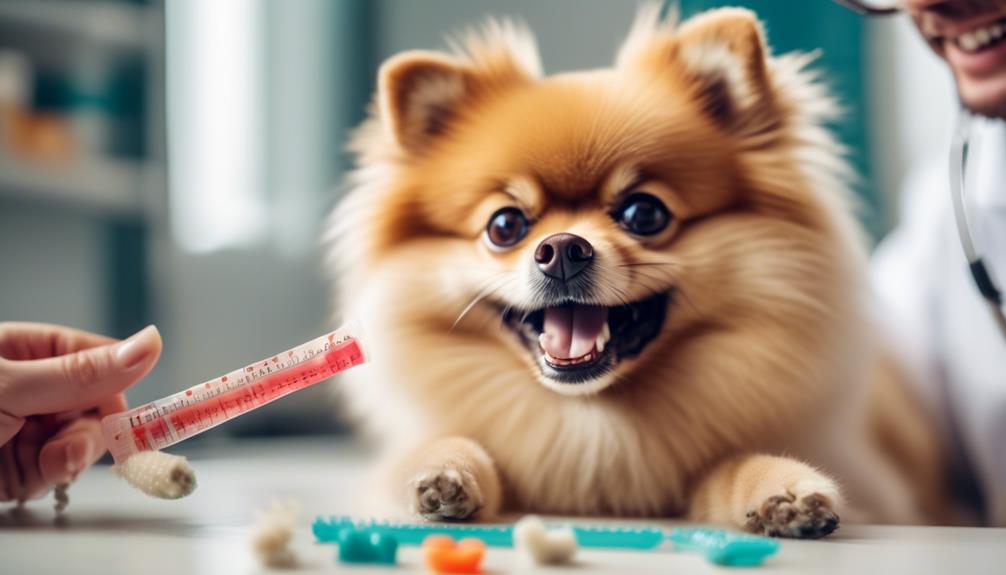
To ensure the well-being of Pomeranians, it’s important to consider health tips and considerations. Here are some key points to keep in mind:
- Regular dental care: Pomeranians are prone to dental issues, so regular teeth brushing is essential for oral health.
- Joint problems: Pomeranians can develop patellar luxation, which affects the knee joint. Monitoring their movement and providing appropriate exercise can help prevent this issue.
- Heart health: Some Pomeranians may have a higher risk of heart problems. Regular vet check-ups and screenings can help detect and manage any potential issues.
- Vaccinations and check-ups: Pomeranians, like all dogs, require regular vaccinations and check-ups to maintain their overall health and prevent disease.
- Proper nutrition and weight management: A balanced diet and monitoring their weight is crucial for their overall well-being.
Frequently Asked Questions
Are Pomeranians Good With Children and Other Pets?
Pomeranians are generally good with children and other pets. They are friendly and pleasant, although supervision is necessary due to their small size. Proper introductions and training can help ensure positive interactions.
How Often Should I Groom My Pomeranian’s Coat?
Pomeranians should be groomed regularly to maintain their fluffy double coat. Brushing their coat at least 2-3 times a week is recommended to prevent matting and keep their coat healthy and shiny.
Can Pomeranians Be Left Alone for Long periods?
Pomeranians should not be left alone for long periods as they are highly energetic and require companionship. They may become anxious or develop behavioral issues if left alone for extended periods.
What Is the Average Lifespan of a Pomeranian?
The average lifespan of a Pomeranian is around 12 to 16 years. They are generally healthy, but regular vet check-ups, proper nutrition, and exercise are essential for their overall well-being.
Are Pomeranians Prone to Separation Anxiety?
Yes, Pomeranians are prone to separation anxiety. They form strong bonds with their owners and can become distressed when left alone for long periods. Proper training and gradual desensitization can help alleviate this issue.
Conclusion
In conclusion, the Pomeranian is a delightful small dog breed with a rich history and unique characteristics. With their fluffy double coat and fox-like face, they’re instantly recognizable.
Pomeranians are energetic and intelligent, making them quick learners. They thrive on mental stimulation and regular exercise to prevent boredom.
While they’re generally healthy, proper care, including regular vet check-ups and a balanced diet, is essential.
Overall, Pomeranians make lovely companions for those who appreciate their lively and spirited nature.




